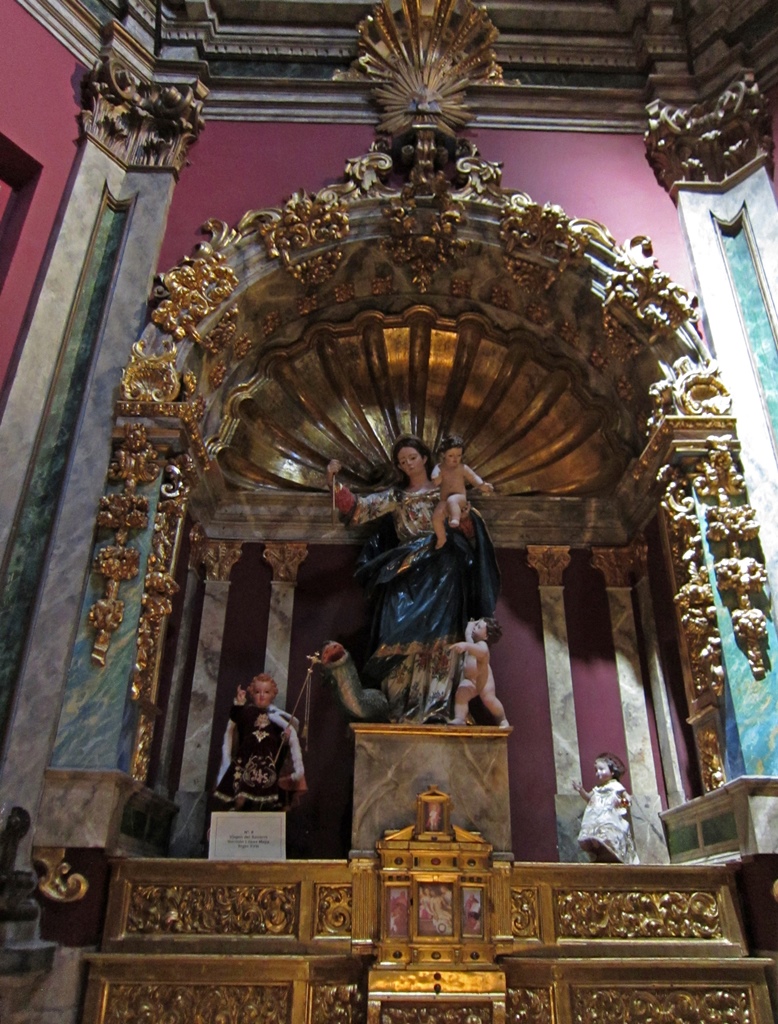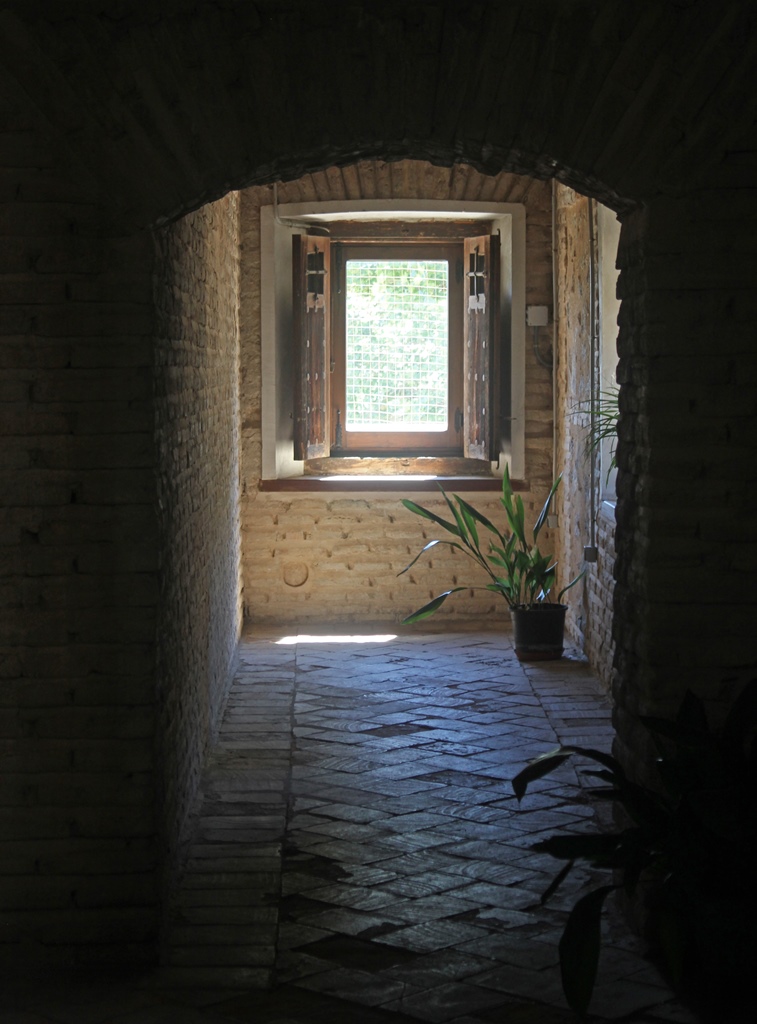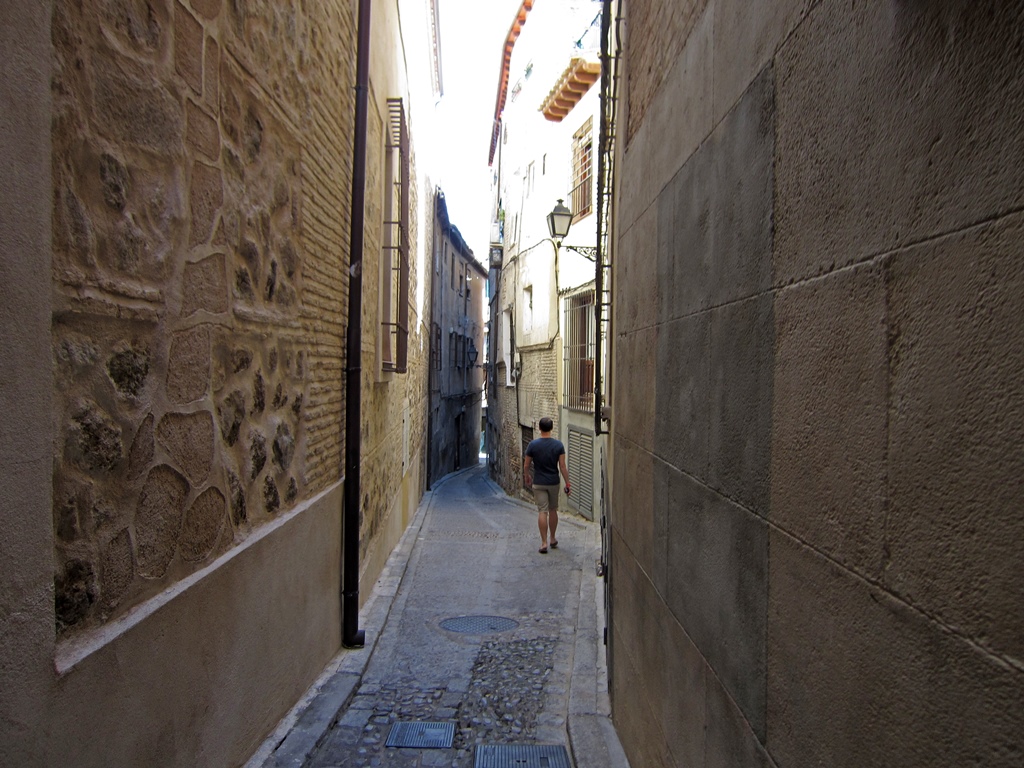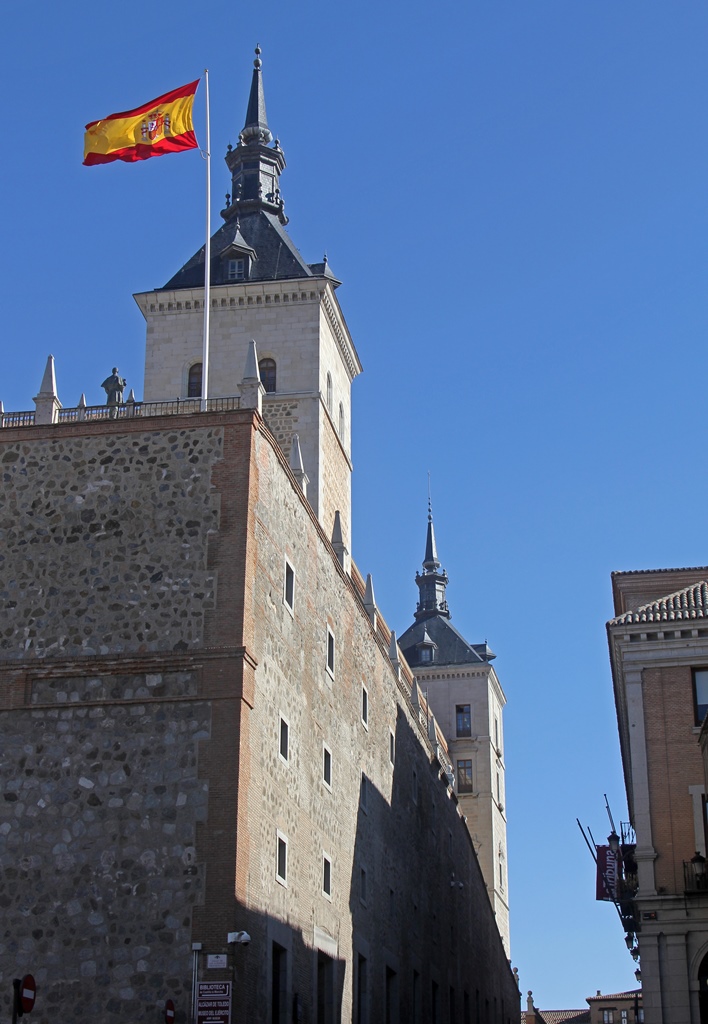Toledo's Jesuit Church was
the largest church we visited by using our Church-O-Rama wristbands.
It's prominently located on an elevated part of Toledo's hill, and can be picked out from a
distance by looking for its distinctive gray dome and twin bell towers.
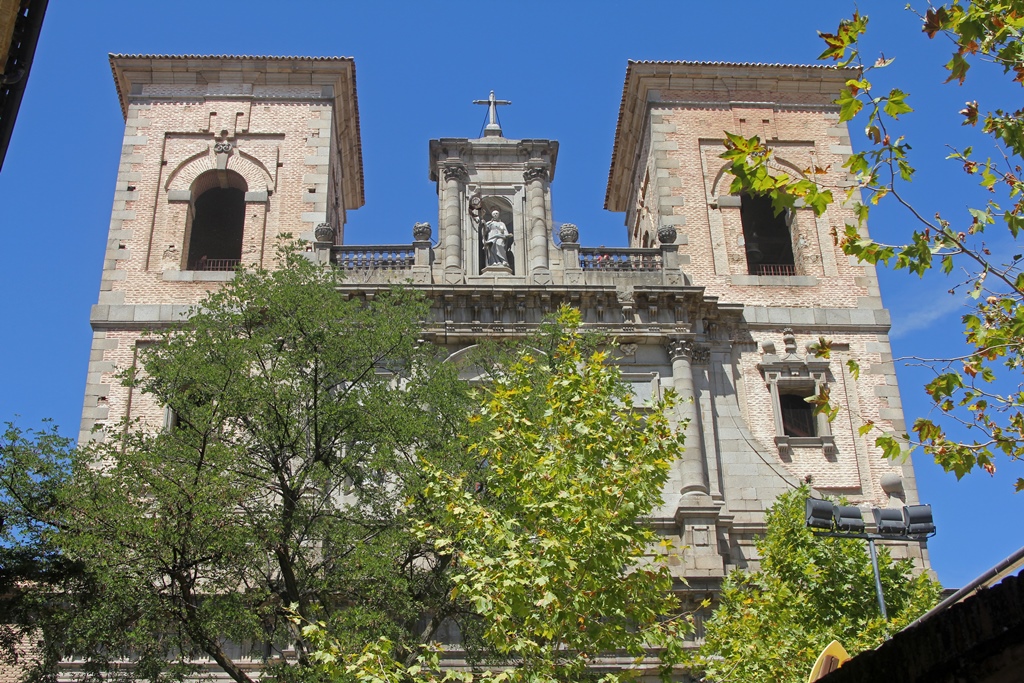
Church Façade
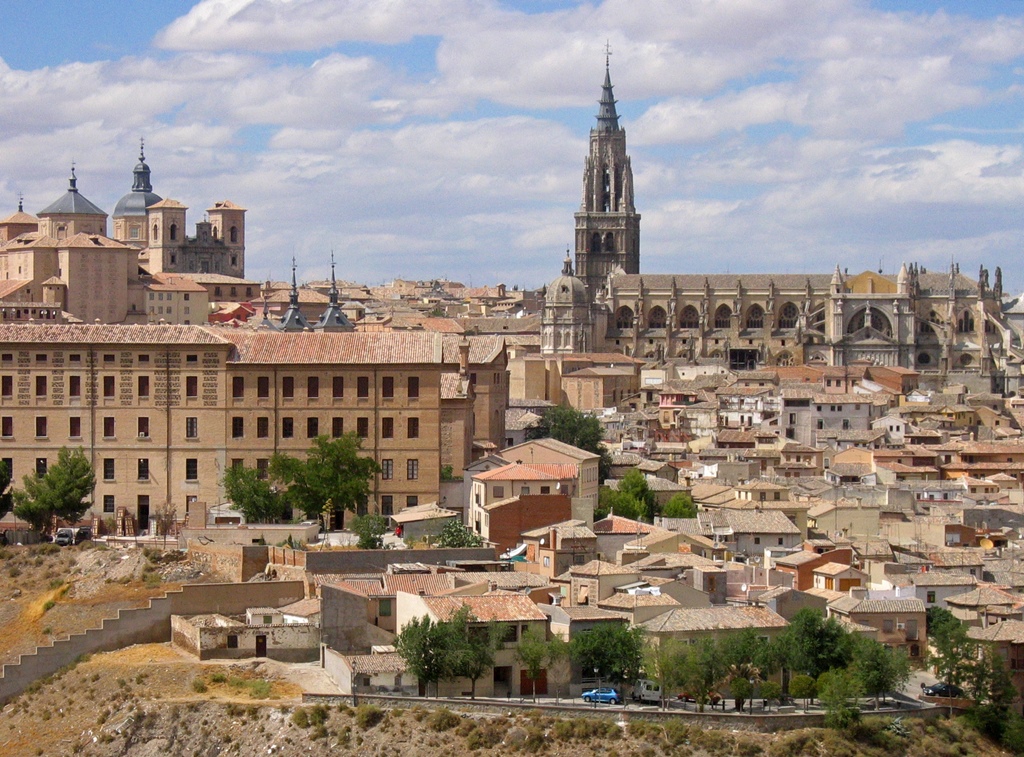
Cathedral (right) and Jesuit Church (left)
It's also the newest of the churches we were to visit, having been completed in 1765 after
150 years of labor and expense and a succession of architects. The church's builders, the
Jesuits, were undoubtedly relieved that their church was finally done, and began making proper
use of it. Unfortunately, within two years they were expelled from Spain and their new church
was taken over by the Spanish crown.
The Society of Jesus, commonly known as the Jesuits, was founded in 1534 by a Basque nobleman
named Ignatius of Loyola, along with six followers, in a crypt beneath the Church of St. Denis
in the Montmarte area of Paris (they were all students at the University of Paris). They
travelled to Rome to ask for official recognition of their new order from Pope Paul III, and
they received papal approval in 1540. These were the days of the Counter-Reformation, the
Catholic Church's reaction to the rise of Protestantism, and the Jesuits extolled the virtues
of Catholicism to the masses by establishing schools throughout Europe, in which students were
taught theology and classical studies by highly-trained instructors. This approach wasn't
uniformly successful, but was effective in the Poland-Lithuania area and in southern Germany.
They also eventually sent missionaries throughout the world, including places like Africa,
Japan and India, and to the North and (especially) South Americas, to keep colonists Catholic
and to create converts among the native population. The first Jesuit missionary to Asia was
one of the original group of seven, Francis Xavier, who headquartered in Goa, which was then
the capital of Portuguese India. In the New World, other missionaries participated in
explorations (the explorers Marquette and Jolliett were Jesuits) and even founded cities (Rio
de Janeiro and São Paulo in Brazil, for example). Jesuit missionaries proved to be experts in
linguistics, printing numerous dictionaries of newly-encountered languages, and their
assistance was indispensable in opening and maintaining diplomatic communication with foreign
governments and populations. As of 1622, the Catholic establishment was well satisfied with
the efforts of the Jesuits, making Ignatius and Francis Xavier (both thoroughly dead by this
time) into saints.
As the efforts of the Jesuits spread, the order acquired increasing political influence, as
well as wealth and property. In retrospect it was probably just a matter of time before some
of the European monarchies started feeling threatened by this increasingly powerful
organization operating within their boundaries, whose interests were sometimes contrary to
their own. One example of this contrariness was the Jesuits' opposition to enslavement of the
native population in South America, and the physical protection of groups of them from
capture. In the 18th Century, European monarchies began to expel Jesuits, mostly on thin
pretexts, beginning with Portugal in 1759. France followed in 1764, and Spain and its empire
followed suit in 1767. In each case the Jesuits' considerable assets were seized by the
government. Ultimately only Russia (thanks to Catherine the Great), Prussia (ditto to
Frederick the Great) and eventually the United States existed as refuges for the Jesuits,
with the order itself being delegitimized by Pope Clement XIV in 1773. In 1814, with the
Napoleonic Wars coming to an apparent end (and the 1773 monarchs having been replaced by new
ones), Pope Pius VII restored the Society of Jesus to the Catholic Church. The restoration of
the order to the various countries from which it had been banned was a longer process (they
weren't restored to Switzerland until 1973), but it eventually became re-established
throughout Europe, and even reacquired some of its assets.
When the Jesuits were expelled from Spain in 1867, the new Jesuit Church in Toledo was taken
over by the Toledo archbishopric, but it wasn't immediately clear what would be done with it.
There was a tentative plan in 1770 to demolish it, but fortunately a use for the church was
found, that of the new parish church of San Juan Bautista, replacing the parish's old damaged
church. This caused a name change for the church – the Jesuits had named it for San Ildefonso,
a 7th Century Visigothic bishop of Toledo. The Jesuits were invited back to Spain in 1815 but
did not get their church back. Instead, they suffered from persecution and from subsequent
temporary expulsions until the 20th Century, when they were reinstated for good. At this time
they also got their church back, renaming it back in honor of San Ildefonso. A restoration was
done on the church between 1996 and 2003, and it now looks to be in pretty good shape. But
apparently the Jesuits aren't practicing in Toledo anymore, due to reduced membership in the
order, having relocated their Toledo membership to Madrid in 2011.
The most obvious feature on entering the church is the main altarpiece, on which are depicted
San Ildefonso, plus figures of angels and Sts. Ignatius and Francis Xavier. But the altarpiece
isn't an altarpiece at all – it's a trompe l'oeil fresco which gives the illusion of columns
and a framework that aren't really there. The illusion isn't particularly convincing, but the
use of perspective is impressive nonetheless. But there is a real tabernacle in the middle of
the main chapel, plus real figures of additional angels, Mary and Joseph on the sides.
Originally the founders of the church, the Manrique family, were to be buried prominently in
the main chapel, but architectural changes moved their tombs to smaller chapels at the ends of
the main chapel.
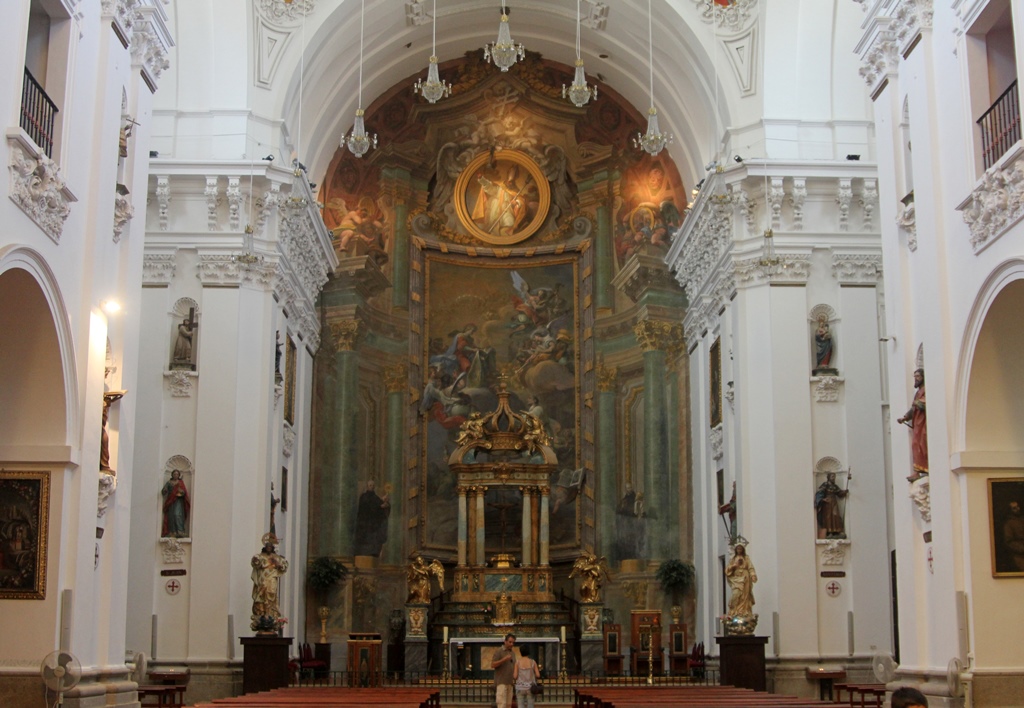
Main Altar
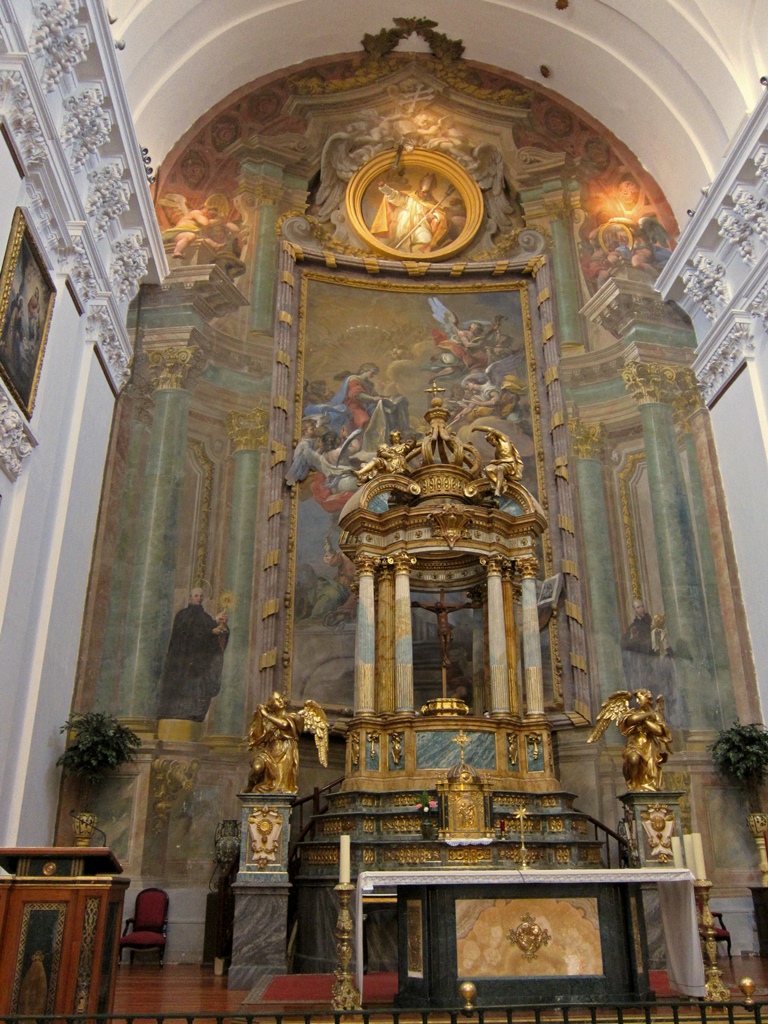
Main Altar
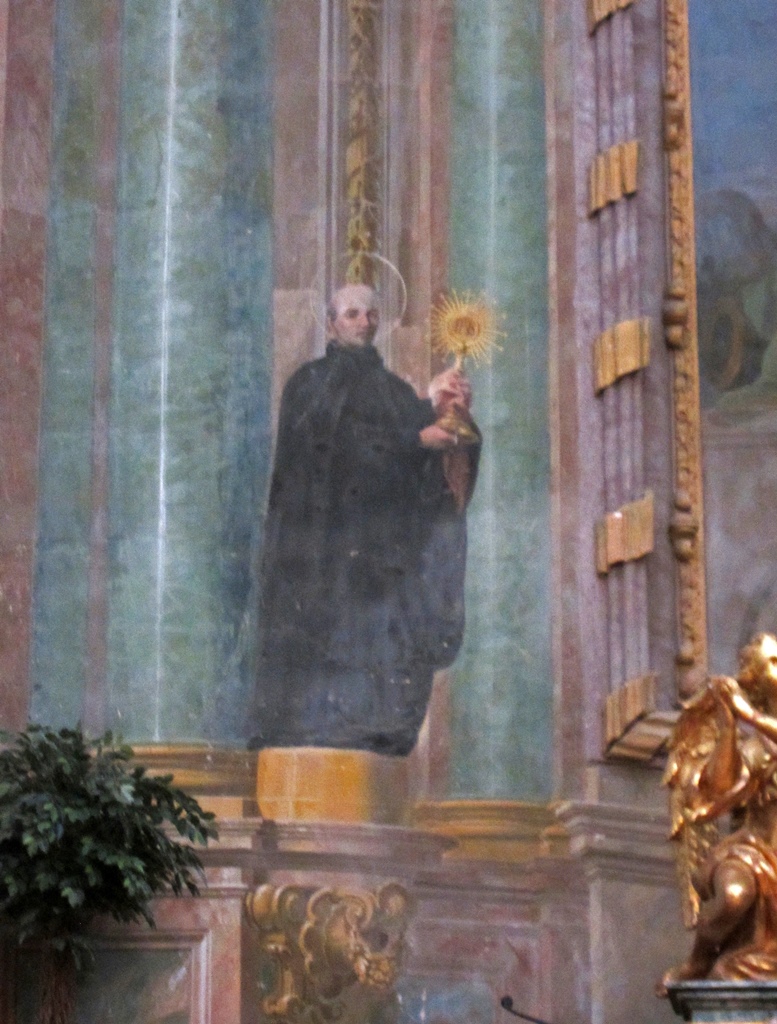
St. Ignatius Figure, Main Altar
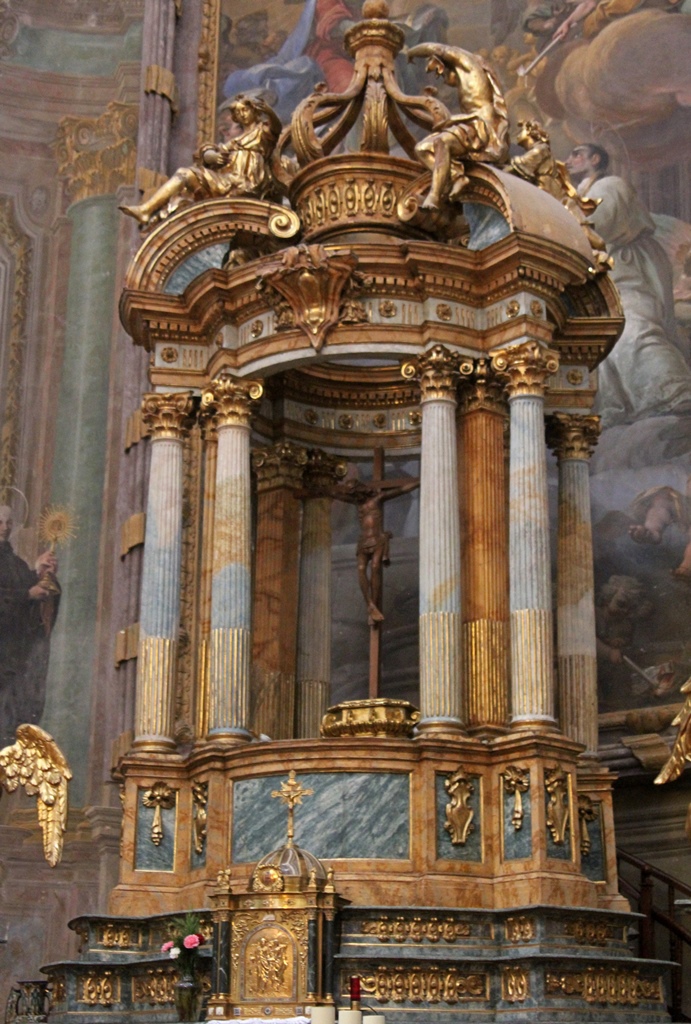
Tabernacle, Main Altar
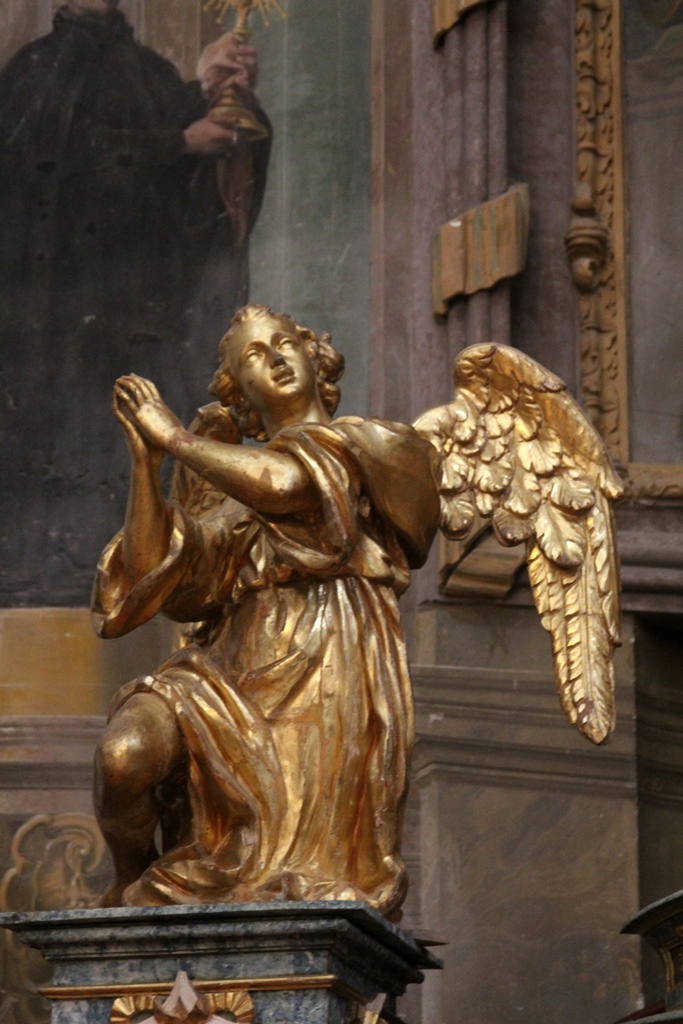
Angel, Main Altar
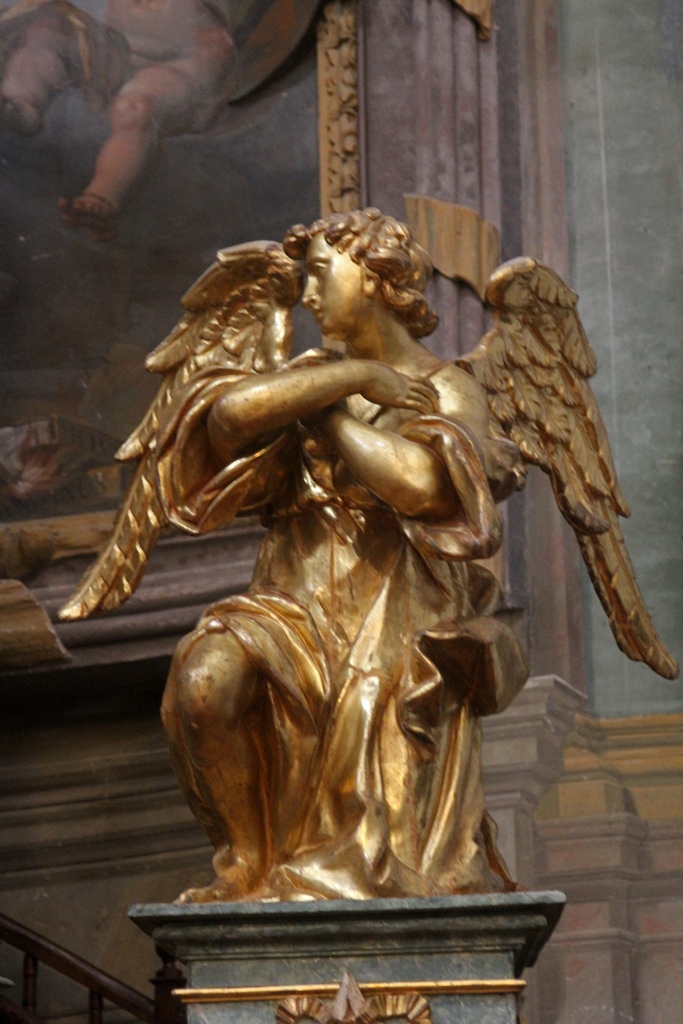
Angel, Main Altar
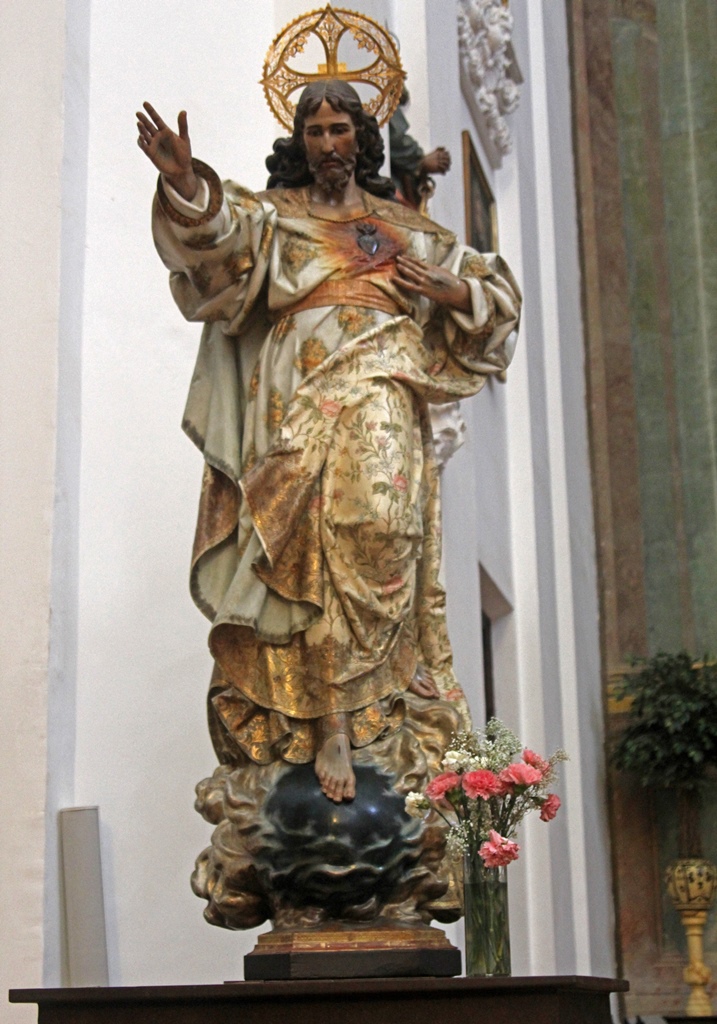
Joseph Figure
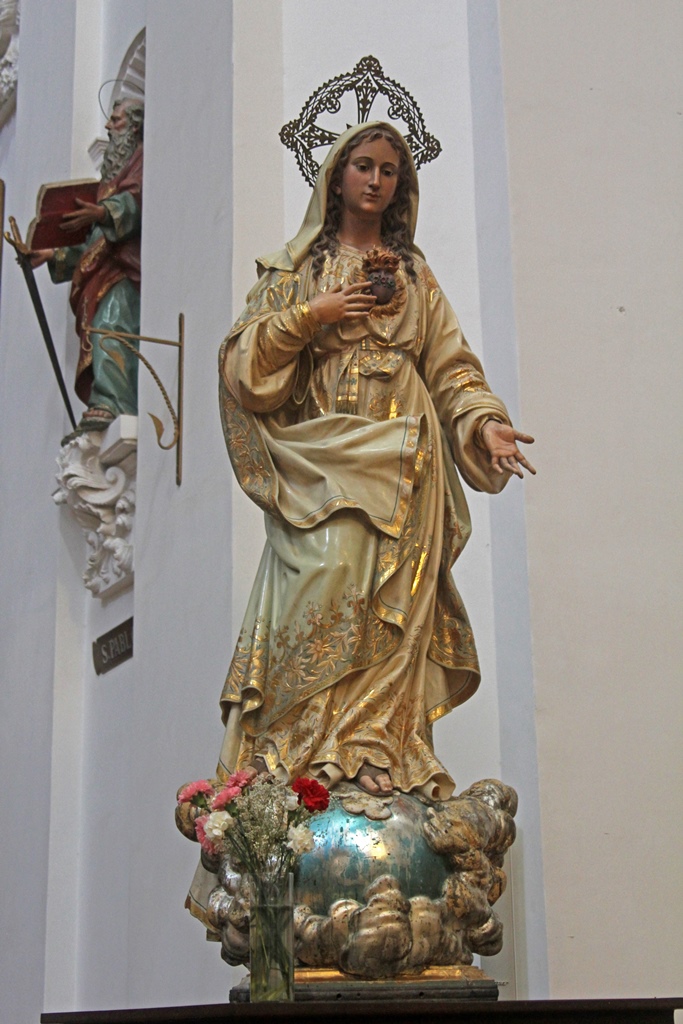
Mary Figure
The remainder of the ground level has pretty much followed the apparently standard Catholic
strategy with churches of this size – it's been loaded up with chapels along the left and
right walls. Being a Jesuit church, there are chapels devoted to St. Ignatius and St.
Francis Xavier.
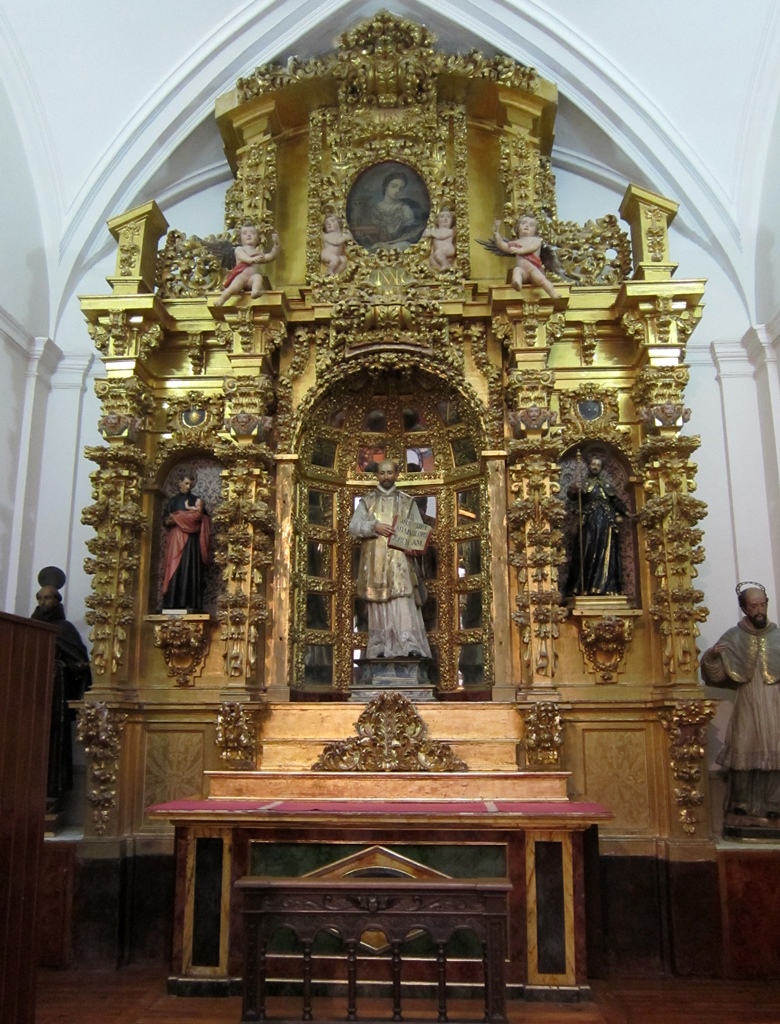
Chapel of St. Ignatius of Loyola
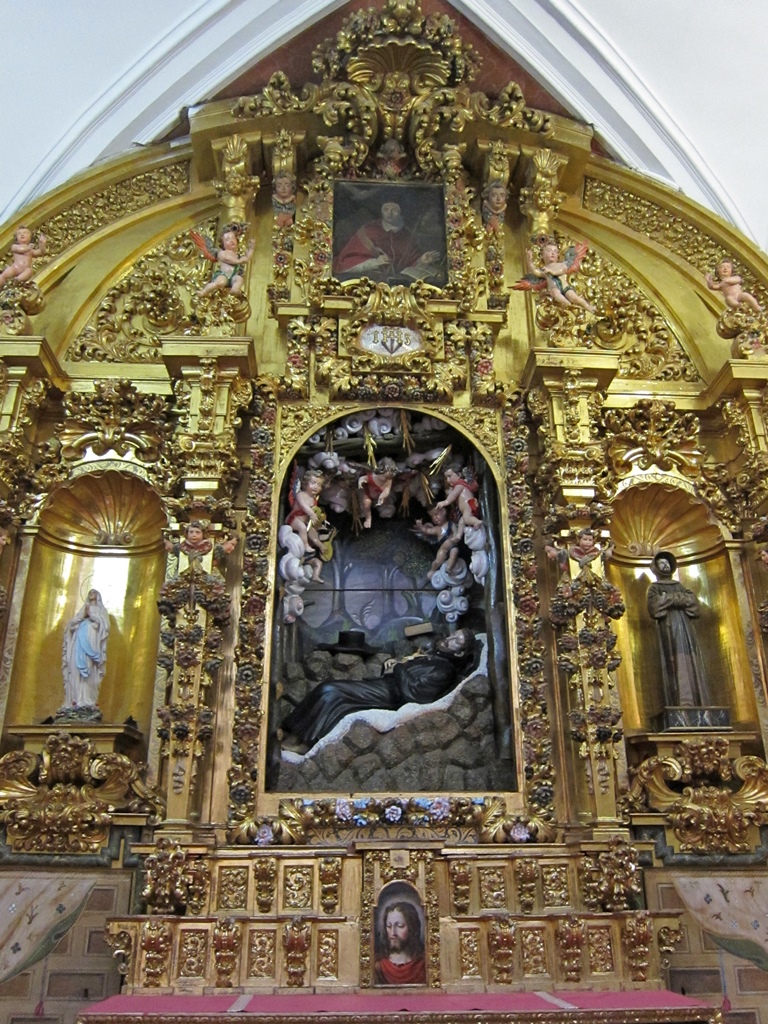
Chapel of St. Francis Xavier
Here are some of the other chapels:
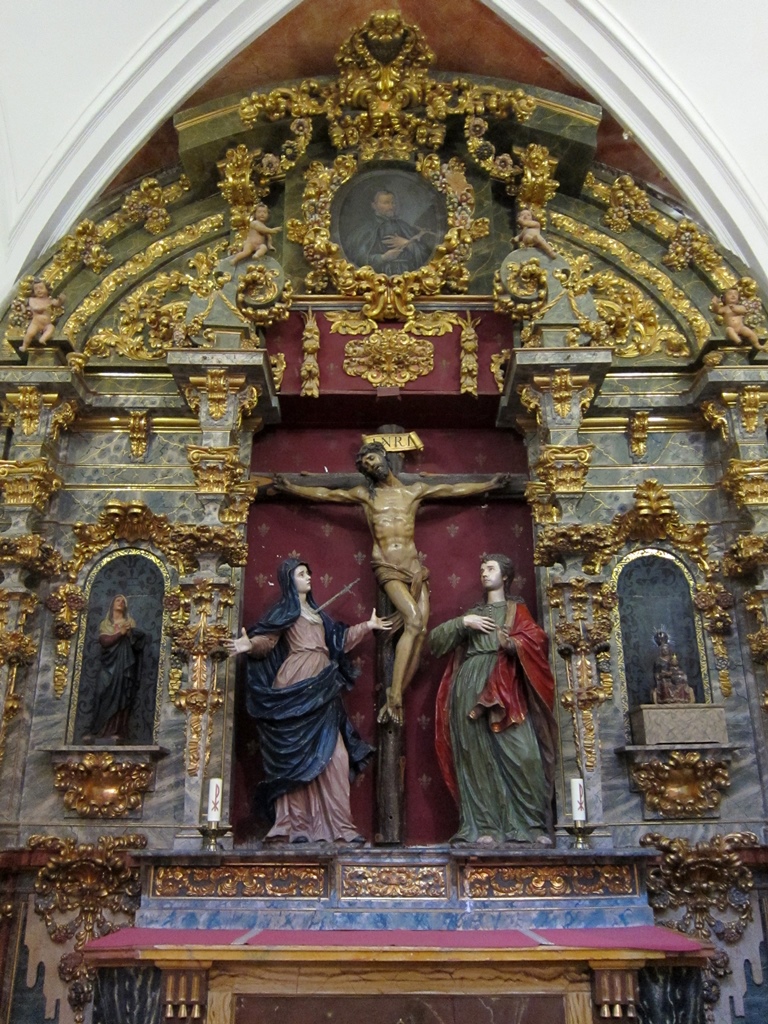
Chapel of the Crucified Christ
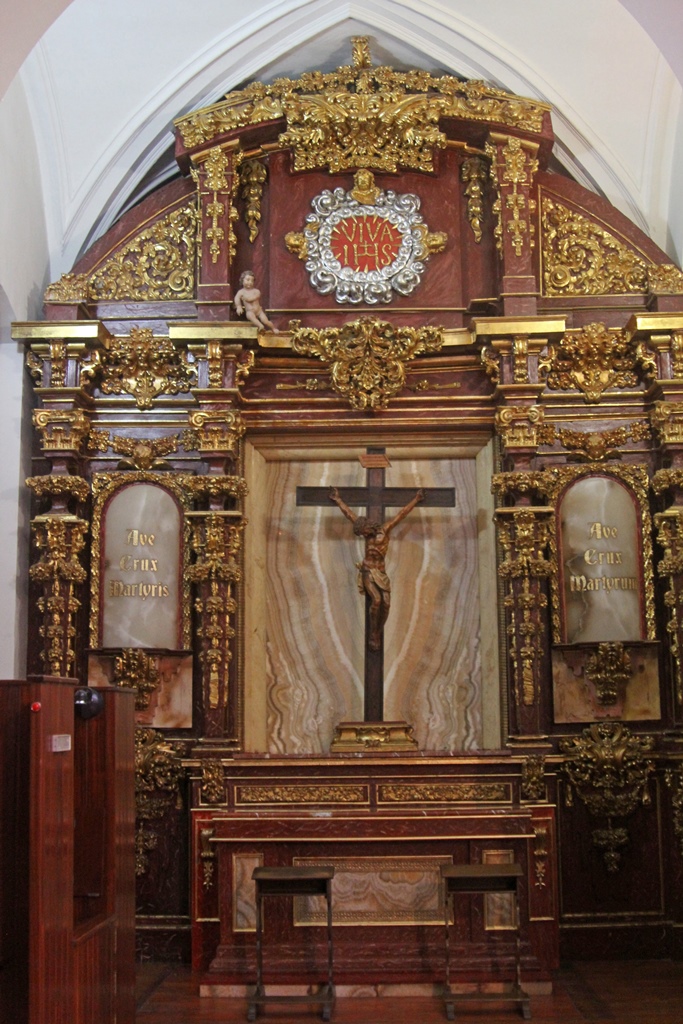
Chapel of the Martyrs of the Civil War
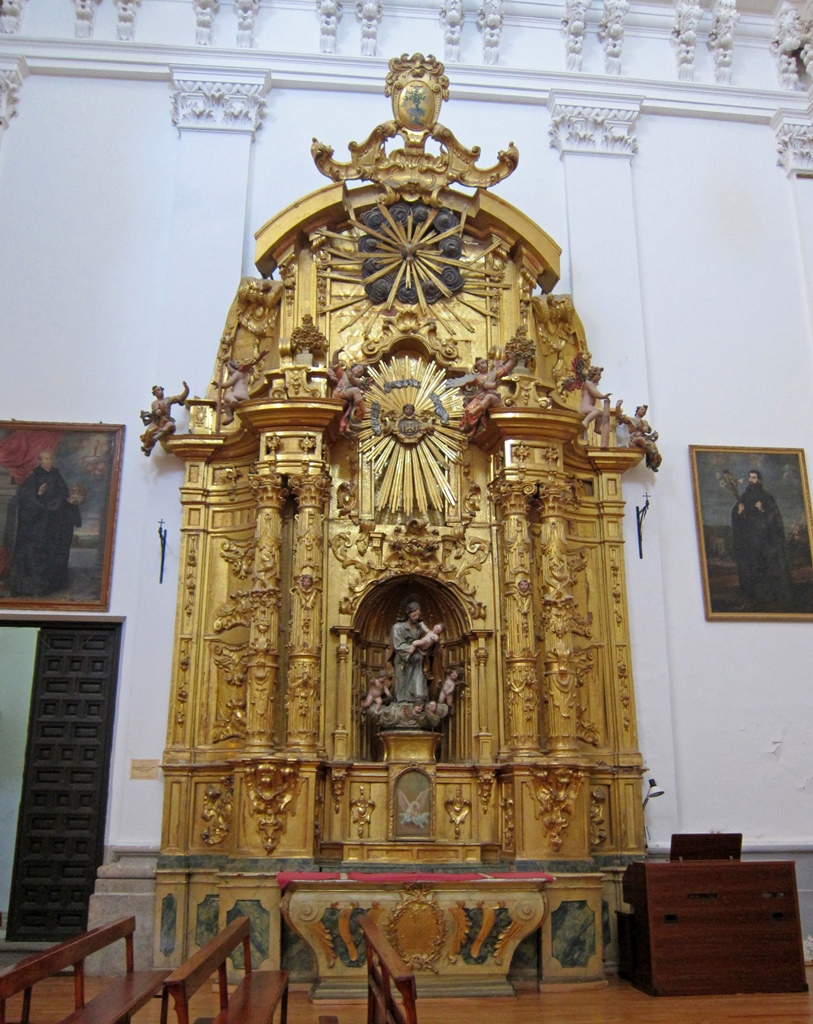
Altarpiece of San José
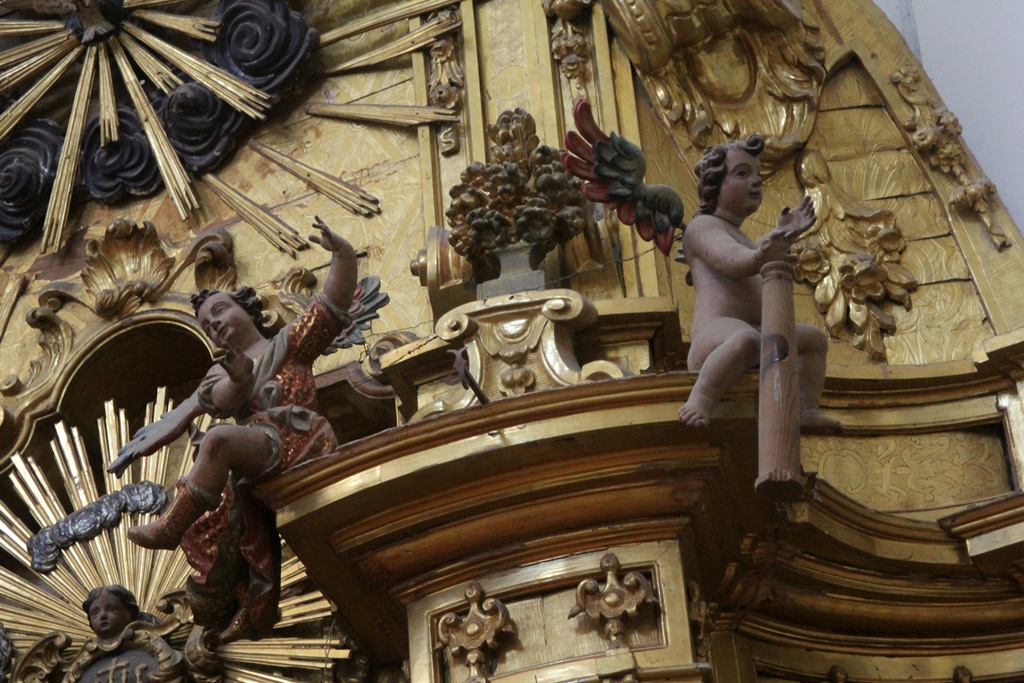
Detail, Altarpiece of San José
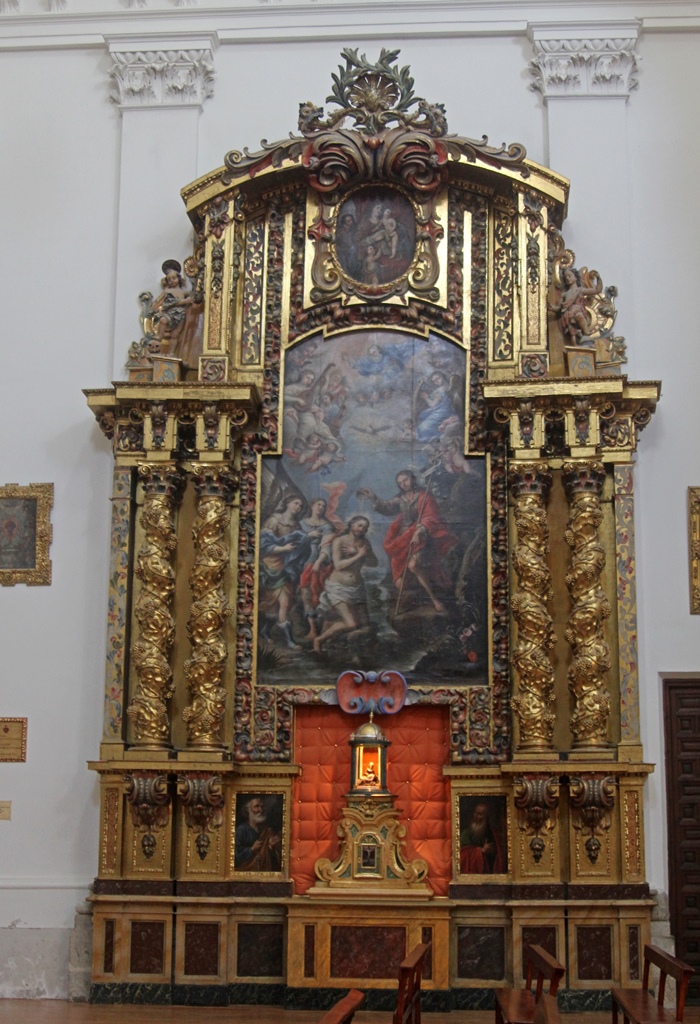
Altar of the Baptism of Christ
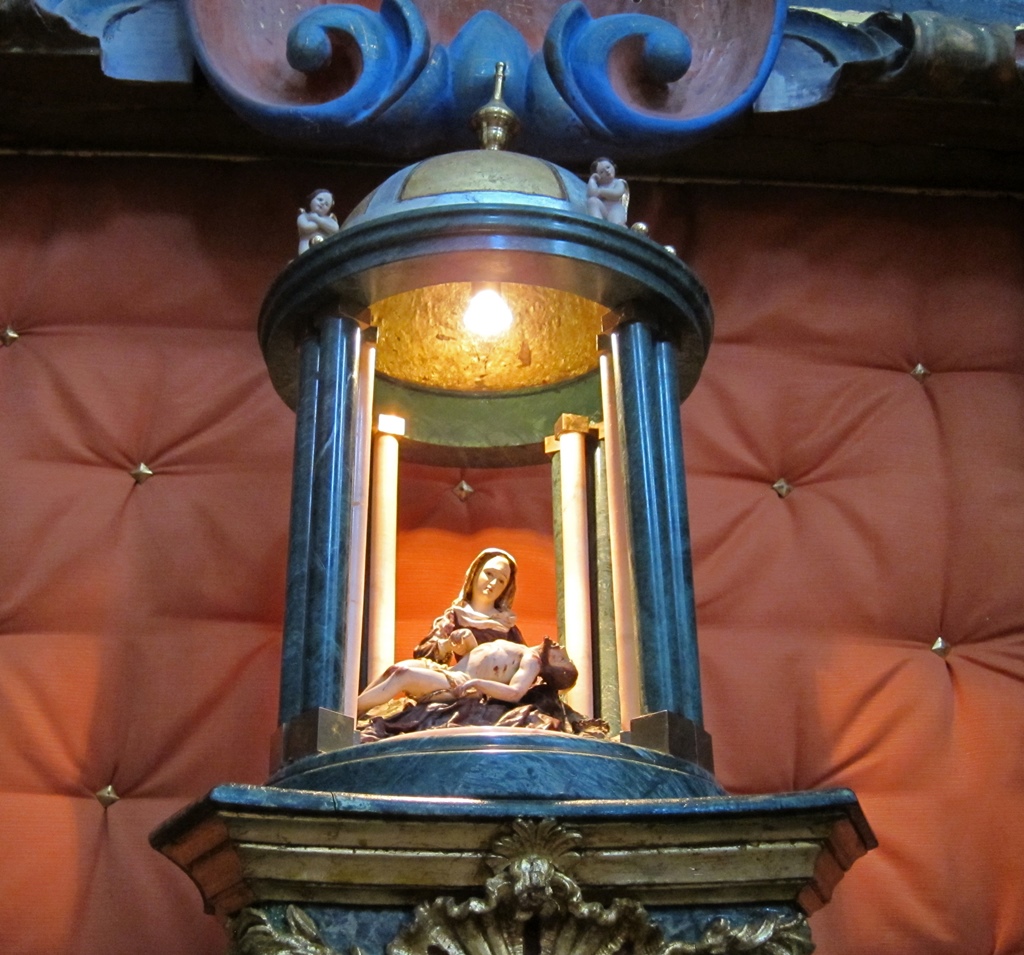
Detail, Altar of the Baptism of Christ
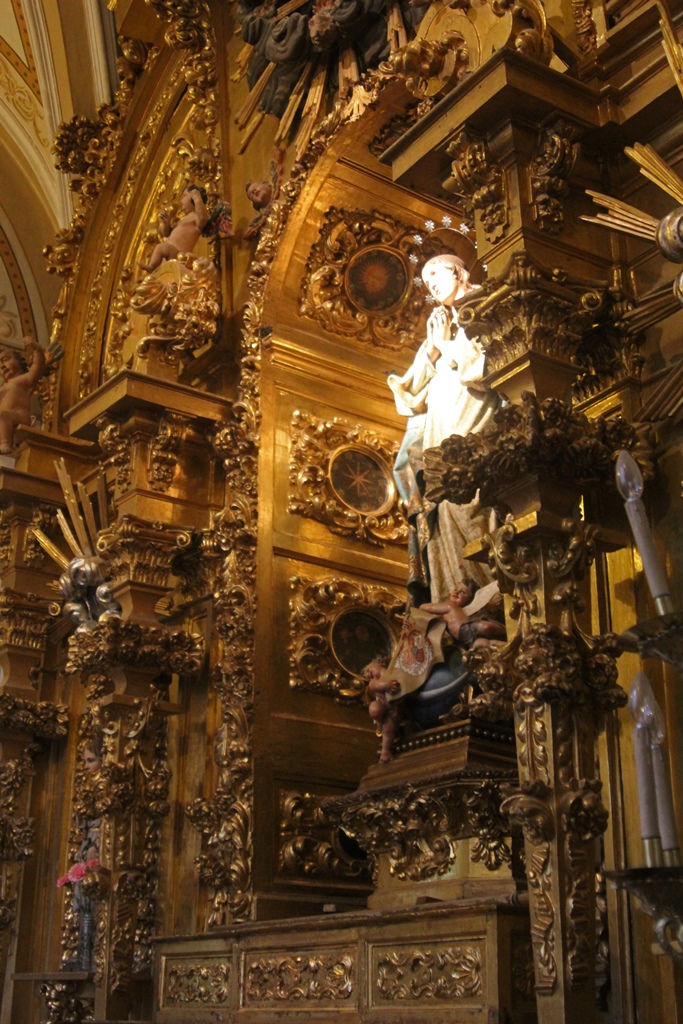
Immaculate Conception Altarpiece
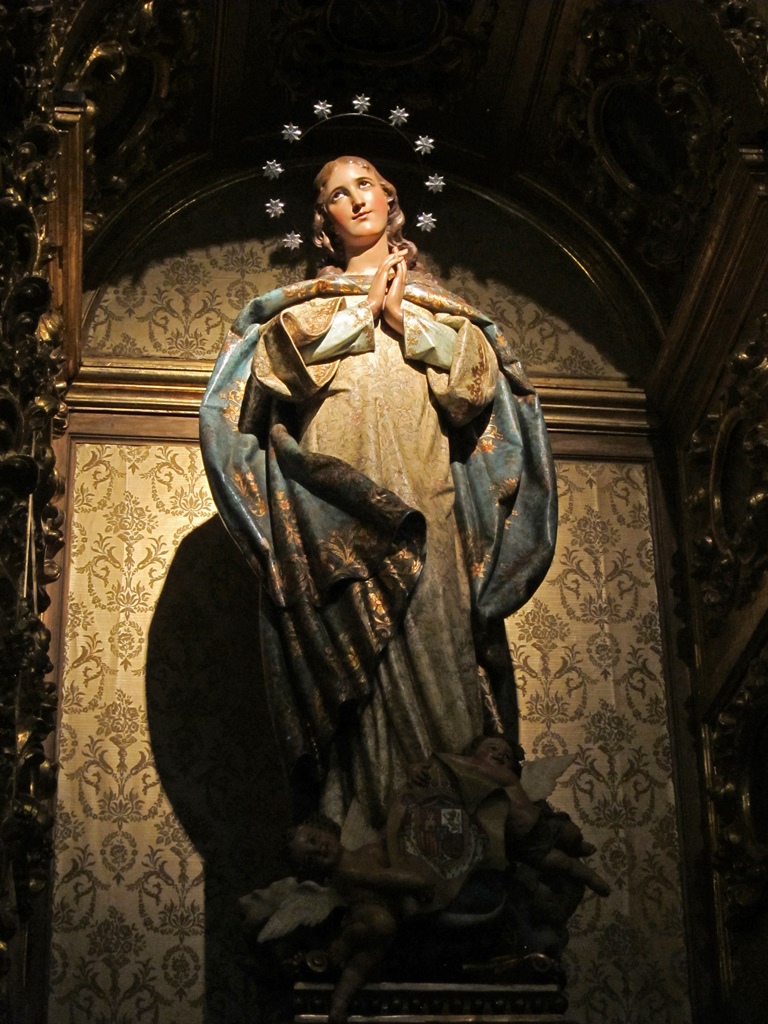
Detail, Immaculate Conception Altarpiece
Virgin of Socorro Altarpiece, Reliquary Chapel
Upstairs, at the end opposite the main chapel, is a choir with pipe organ. One can climb
a stairway to go up and get the bird's-eye view.
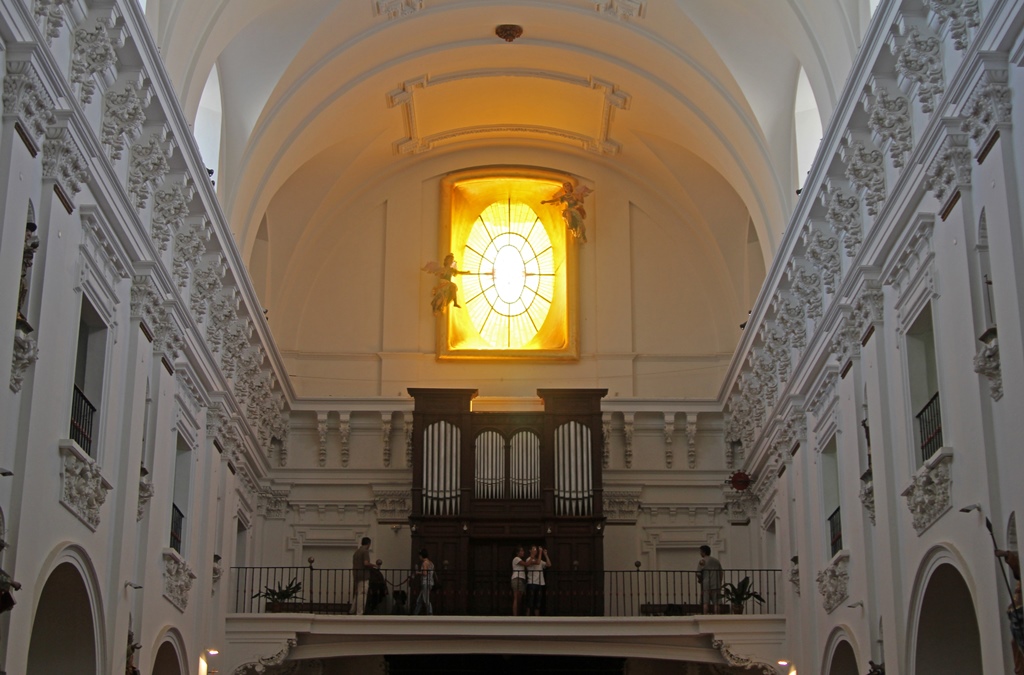
Choir with Organ
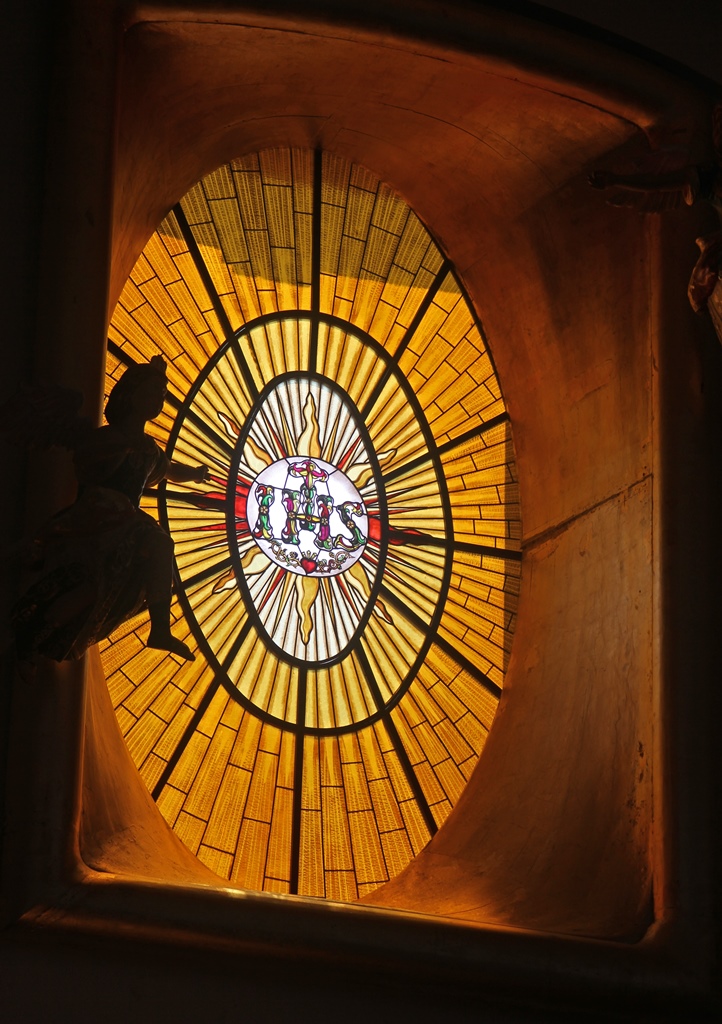
Choir Window
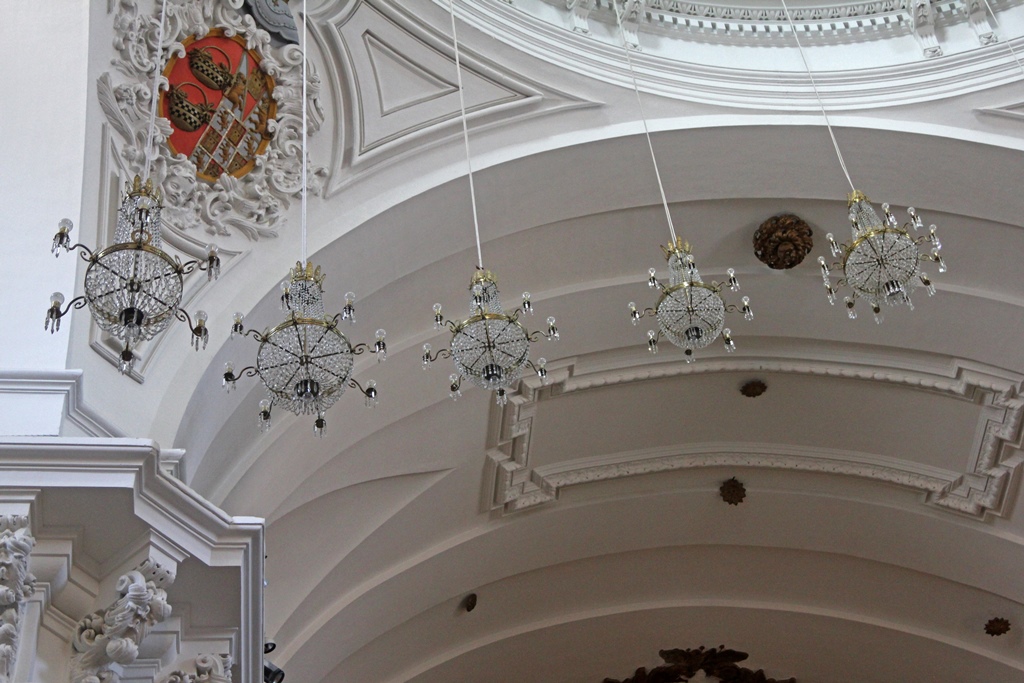
Chandeliers Under Dome
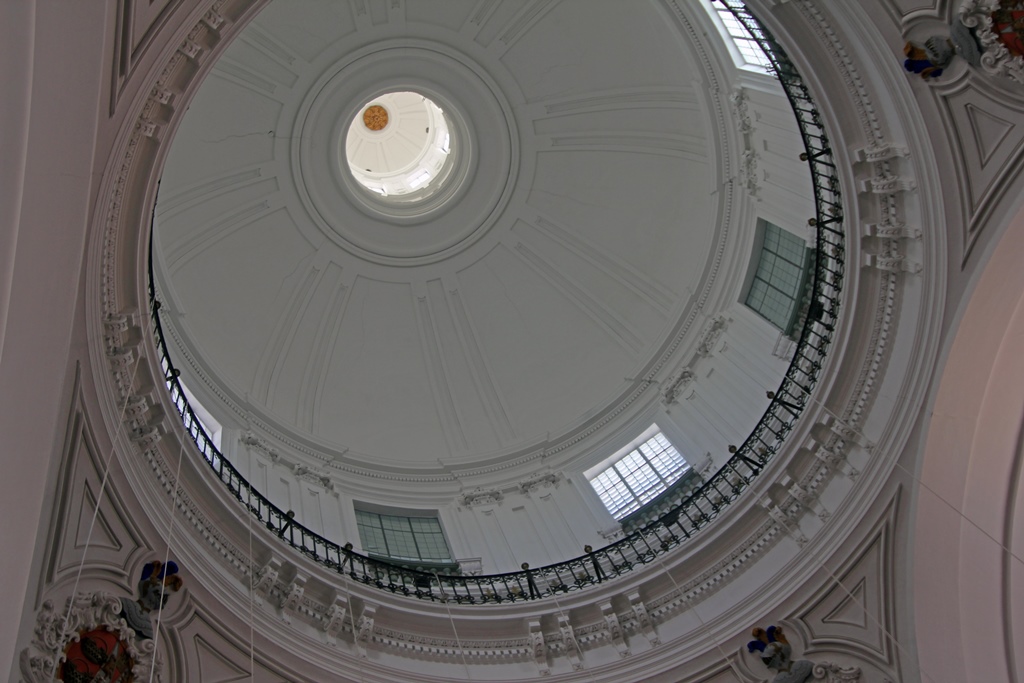
Dome

Church from Choir
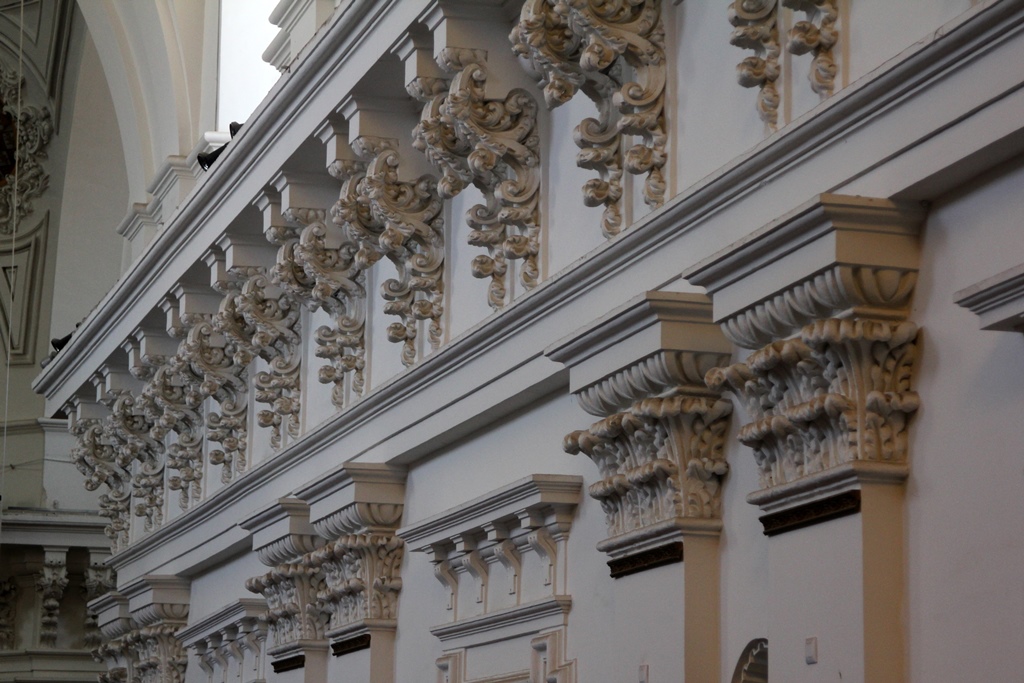
Church Decorations
Gallery Passageway
With the church being tall and situated where it is, it’s pretty much guaranteed that
the view from the roof is pretty good. Fortunately, a visit to the roof is included
in the price of admission. Nella and Philip weren't really interested – they were
pretty tired from the day's exertions (Nella's energy may also have been lagging for
another reason, which would become obvious the following day). So it was left to me
to go up and see what might be the best view in town. And as it turned out, I pretty
much had the roof to myself.
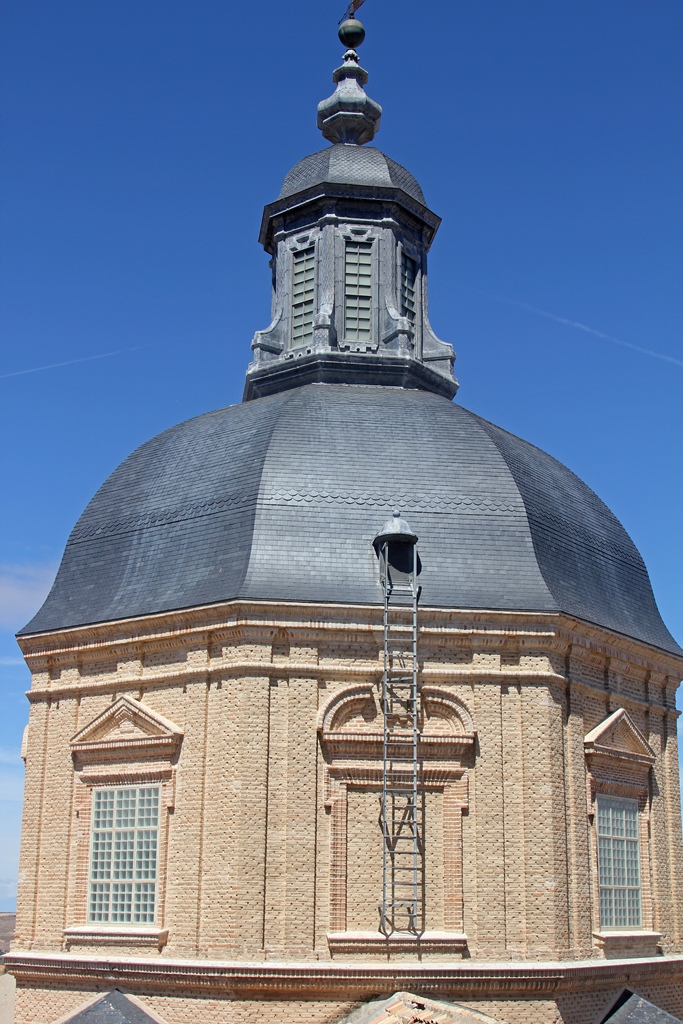
Dome from Roof
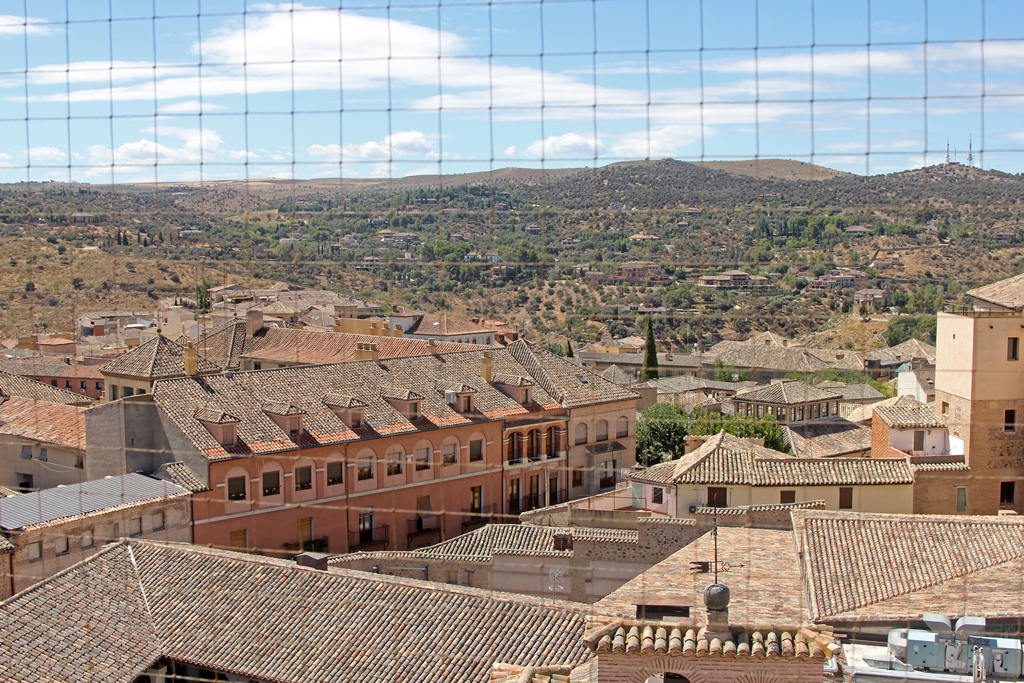
Calle de Alfonso XII and View to Southwest
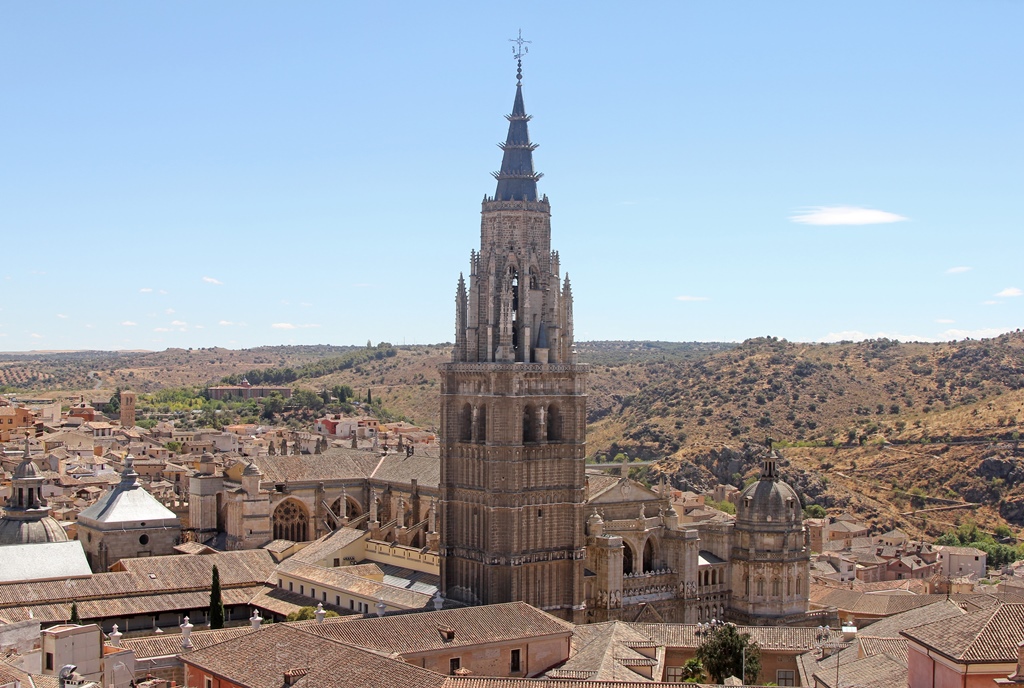
The Cathedral
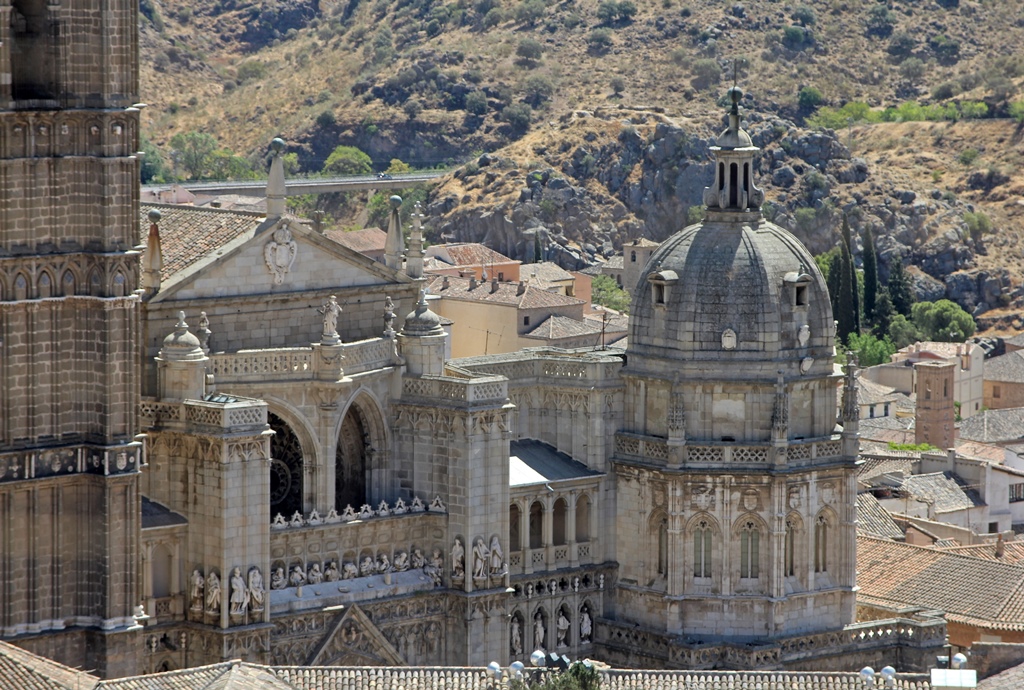
Cathedral Façade and Mozarabic Chapel Dome
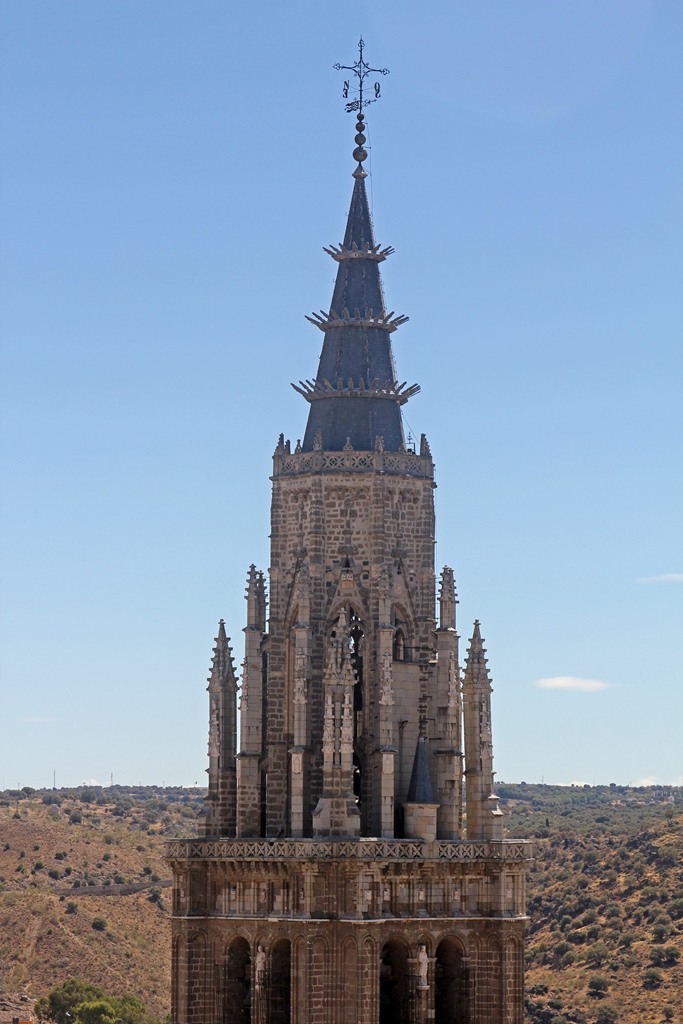
Cathedral Bell Tower
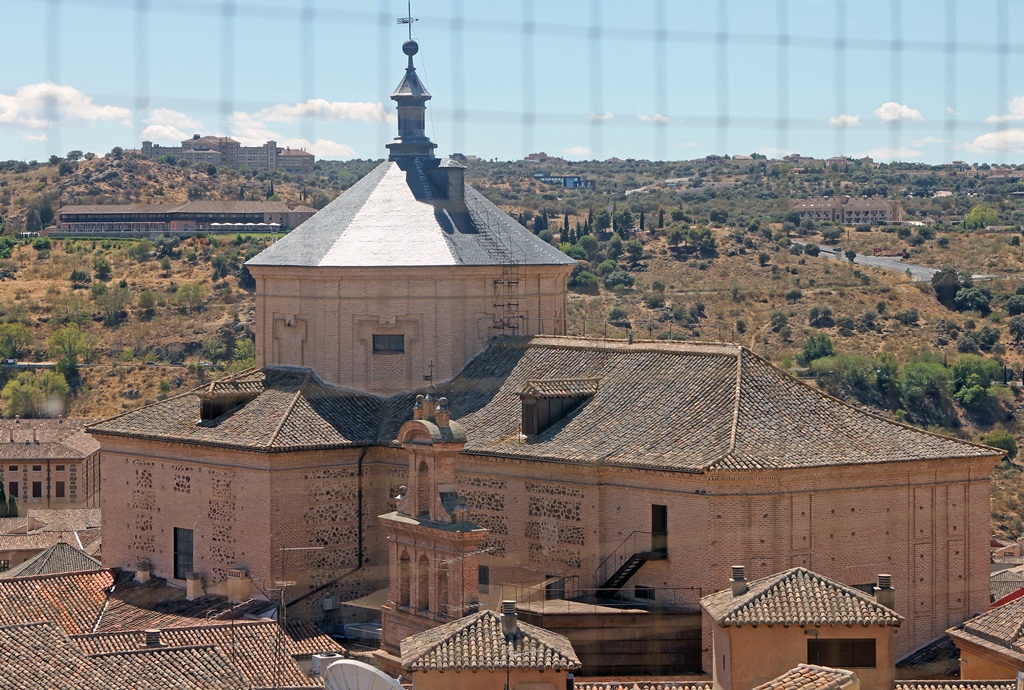
San Marcos Church
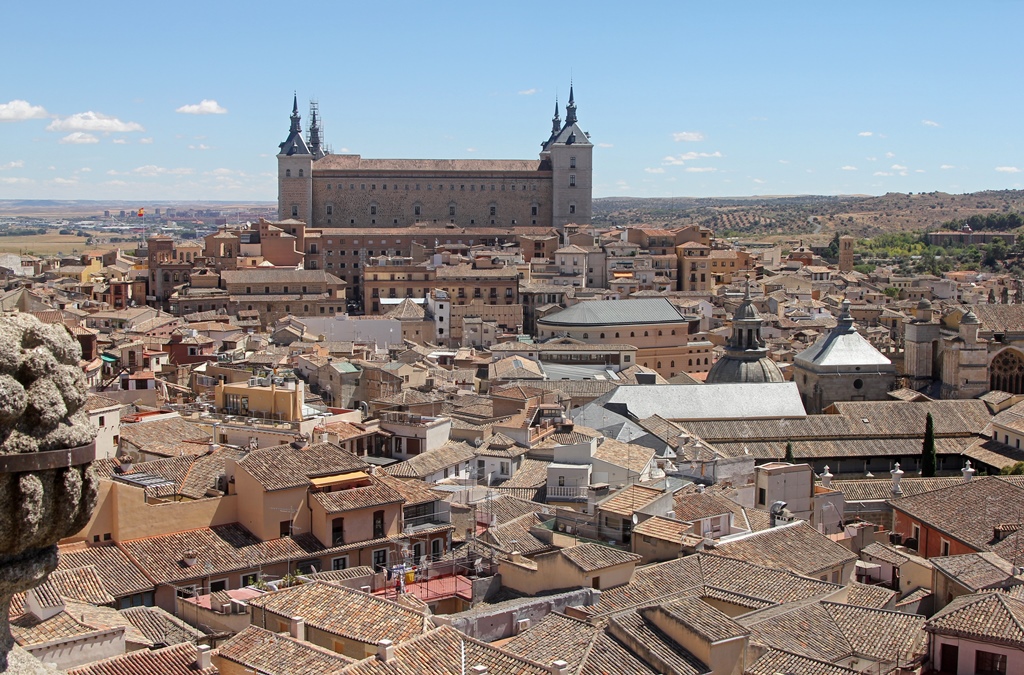
Alcázar and View to East
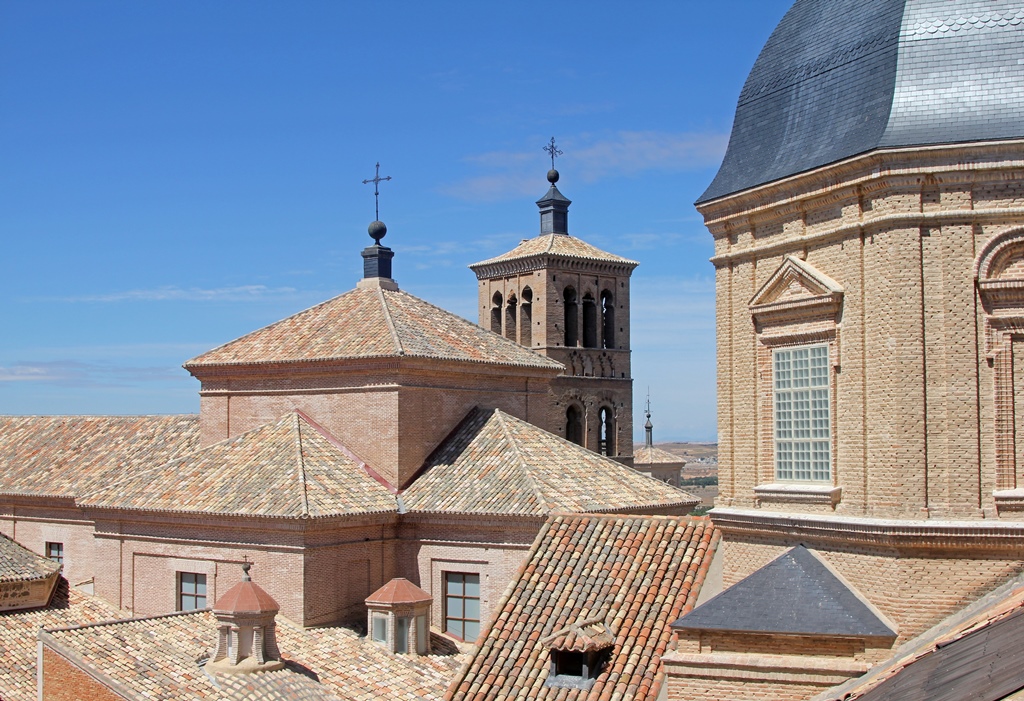
Campus de Toledo, Church of San Román and Dome
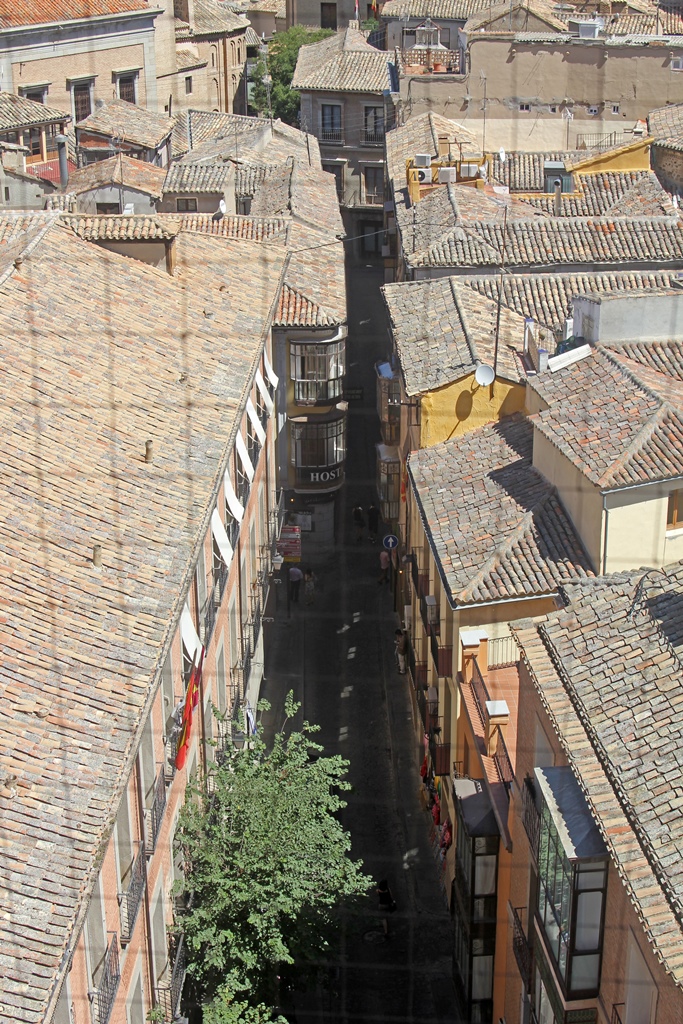
Calle Alfonso X el Sabio
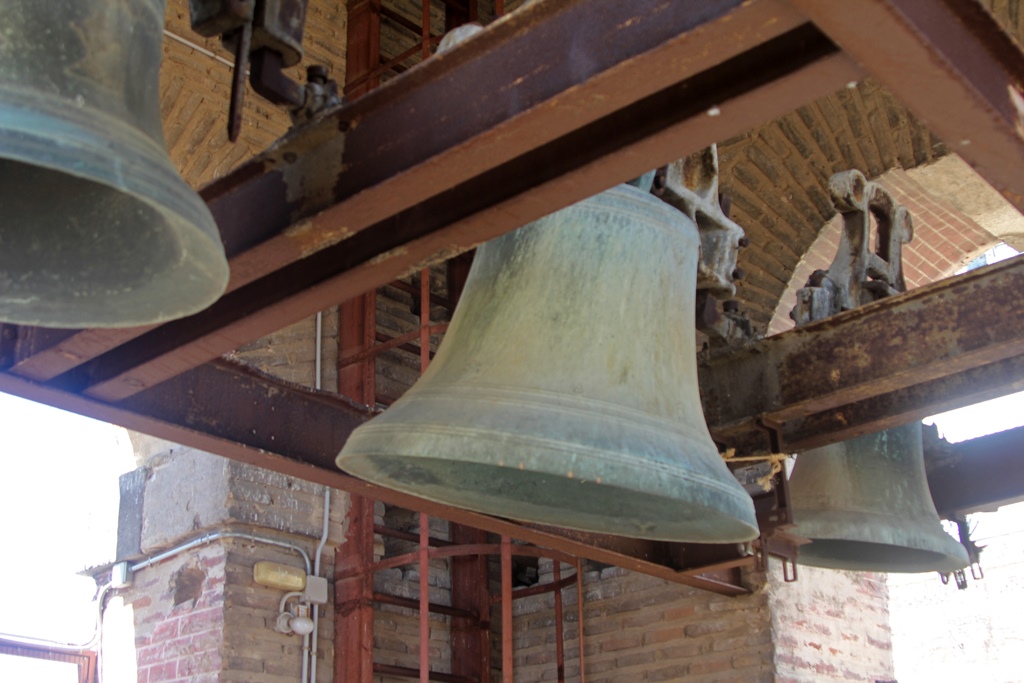
Church Bells
View from the Roof
I climbed back down from the roof and found Nella and Philip, and we left the church. We
headed in the general direction of the Alcázar, to see what might be of interest there.
Nella decided to rest in the Plaza Zocodover while Philip and I investigated.
Philip and Calle Nuncio Viejo
A defensive fortification of some sort has been at the present site of the Alcázar since at
least the Bronze Age. The present building was rebuilt after the Spanish Civil War, when
the previous building was destroyed in a famous siege in the summer of 1936. During this
siege, Nationalist forces held the Alcázar while being bombarded repeatedly by Republican
forces. The siege ended when Francisco Franco's Nationalist Army of Africa arrived and
chased the Republican forces away. This was a big symbolic victory for the Nationalist
forces, and in retrospect can be considered a tactical blunder by the Republican forces,
whose two-month siege of a minimally strategic target tied up 8000 soldiers who could have
been far more useful elsewhere. Regardless, the new building is very nice and houses an
Army Museum,
which has many displays of military items from throughout Spanish history. It
also has a no-photography rule, so unfortunately there isn't much to show you here.
The Alcázar
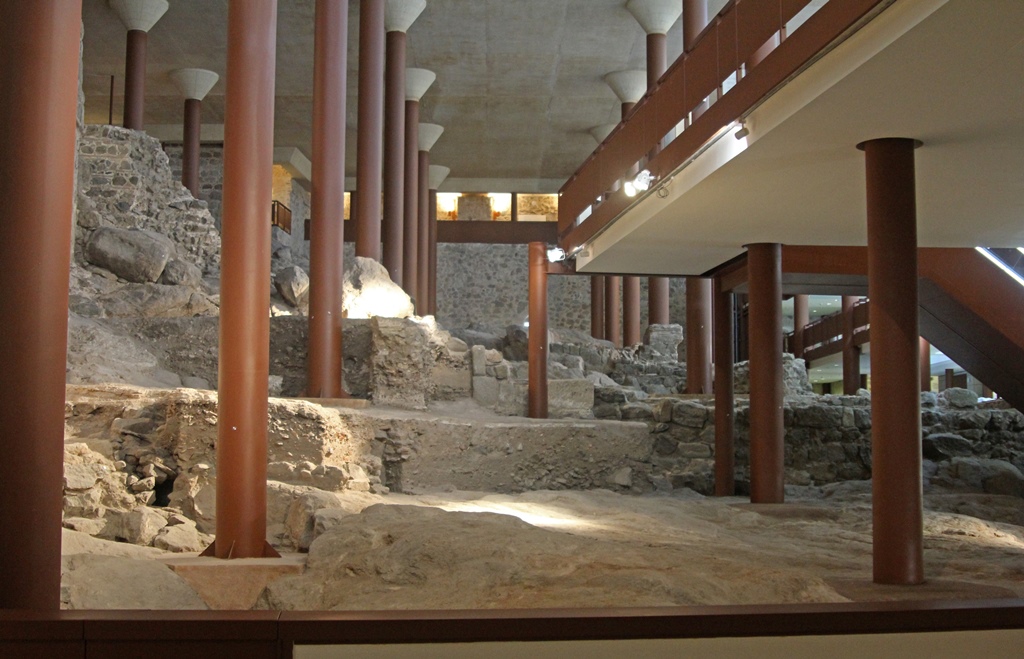
Bronze/Middle Age Ruins, Alcázar Lobby
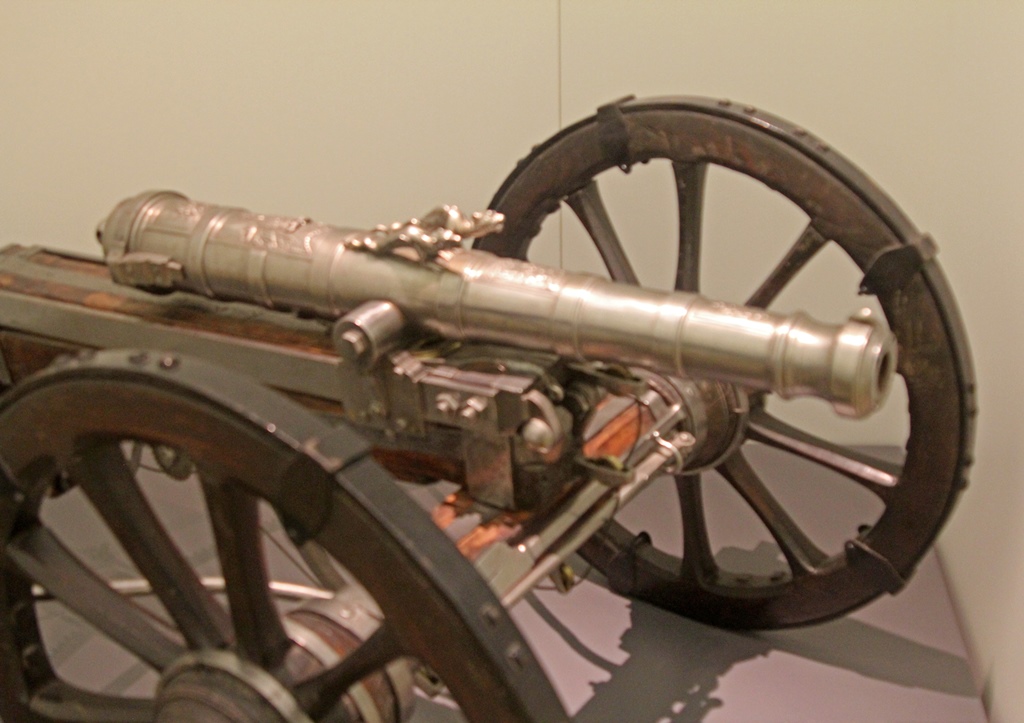
Small Cannon, Alcázar Military Museum
From the Alcázar we walked past Plaza Zocodover to an overlook from which we could
see the part of Toledo north of the Old Town. Then, to save our energy (and our feet),
we found a bus which took us back to our hotel. On the way, we could see some of the
fortifications along the northern boundary of the Old Town. We resolved to get a
closer look the following morning.
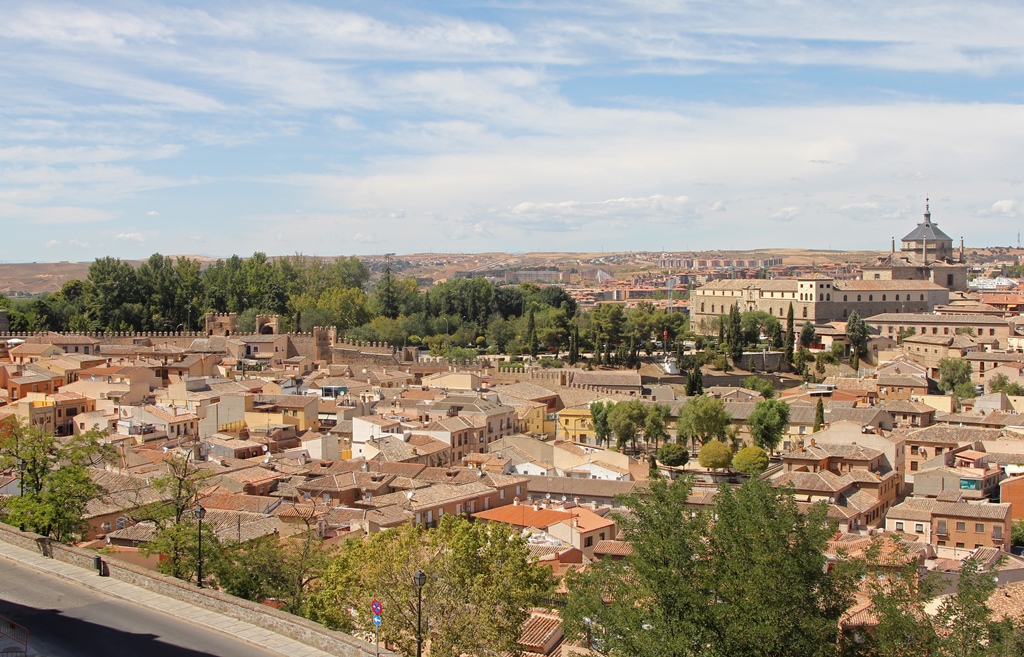
Fortifications and Colegio San Juan Bautista
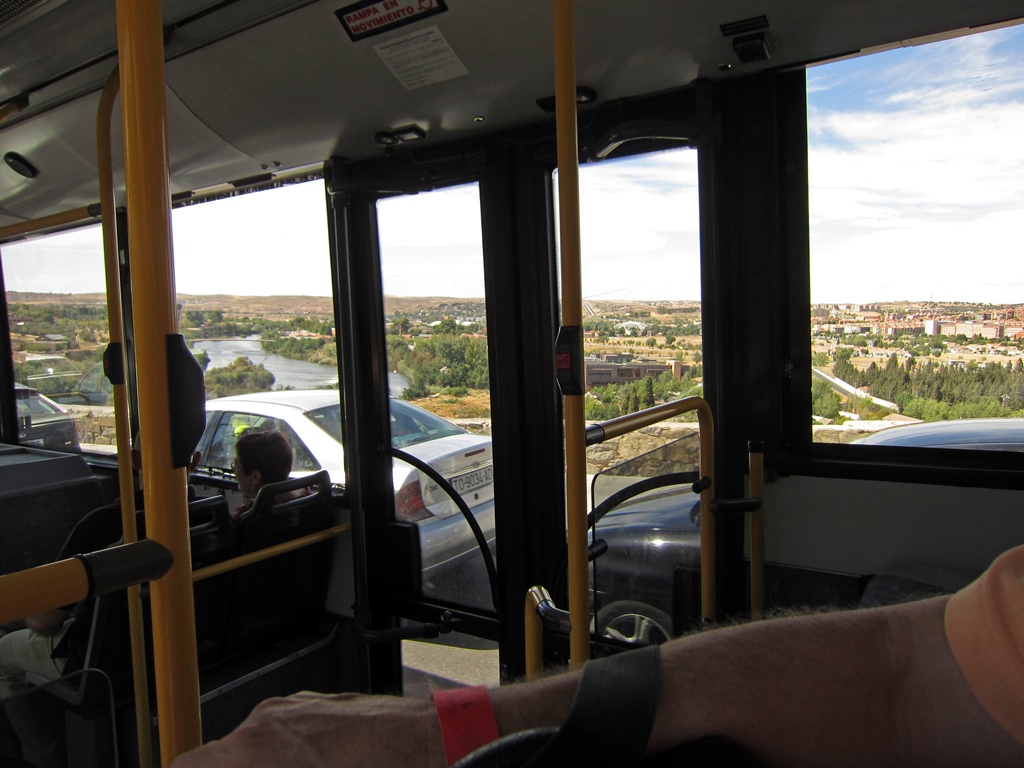
Tagus River from Bus





















